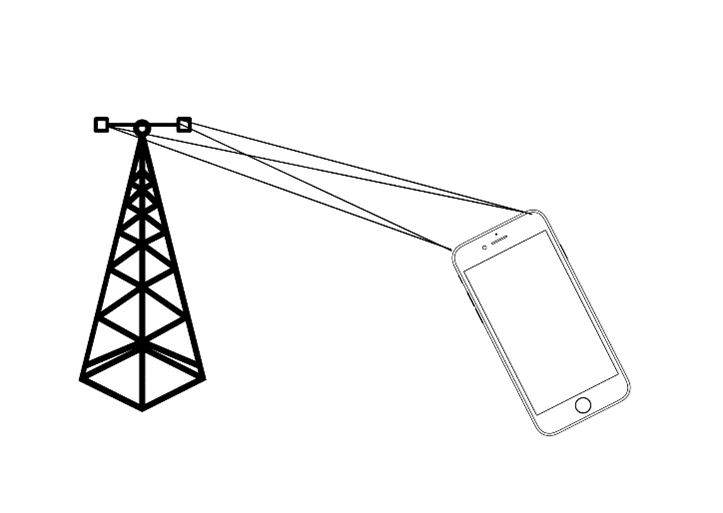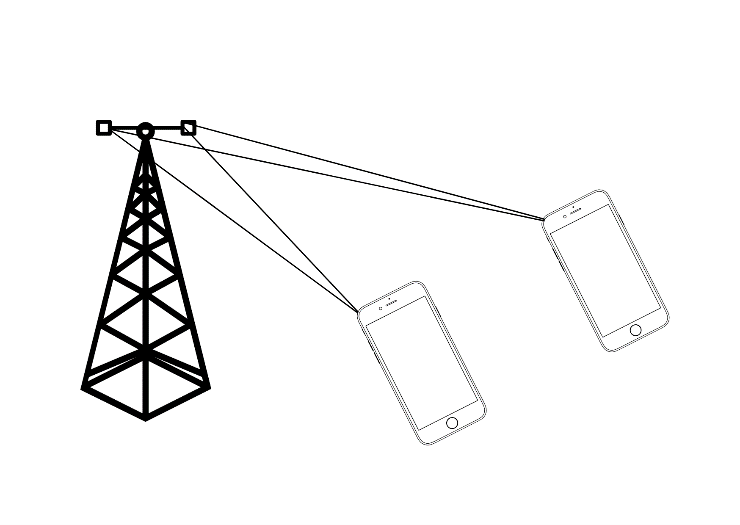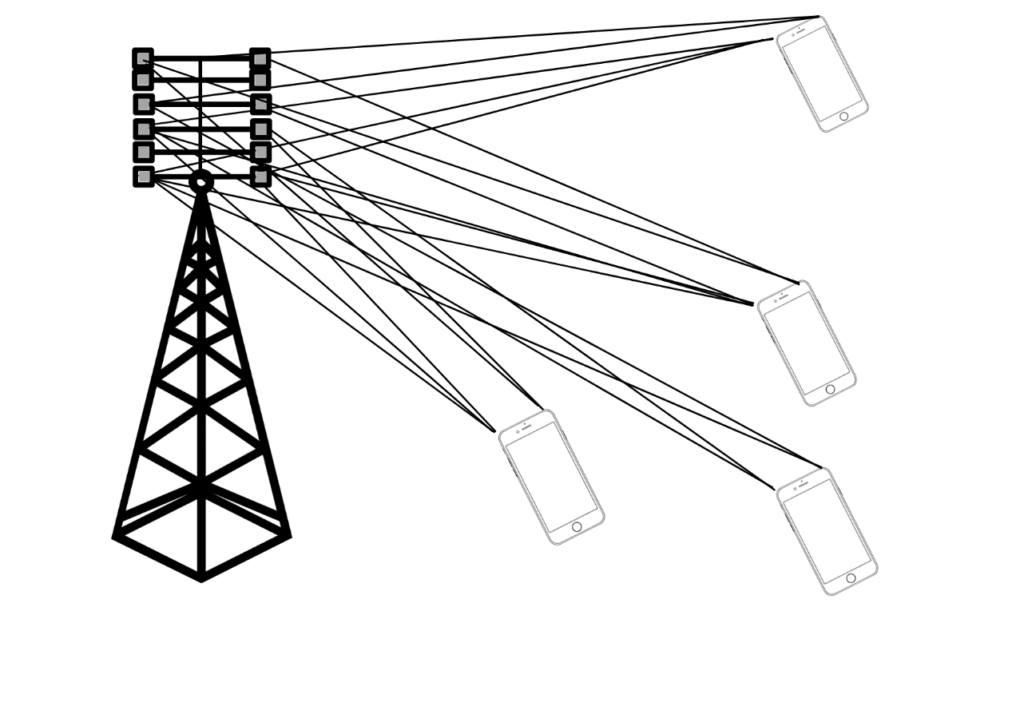What is MIMO?
MIMO is an abbreviation of Multiple Input and Multiple Output. It is a communication technology, in which more than one antenna is used for data transmission. For example, MIMO 2X2 means that in the sending end and in the receiving end, there are two antennas. MIMO technology enables greater data speeds and much greater data transfer capacity. Multipath propagation enables MIMO technology because antennas (channel matrix) are uncorrelated.
Single-user MIMO

Single-user MIMO focuses all the streams of antenna arrays on a single user. Single-user MIMO technology allows data to transfer simultaneously through more than one data streams to one device. Advantage of SU-MIMO is that there are no interferences and radio channel estimation is easier to achieve. Downside is that it can only serve one device at a time and if transmission matrix is uncorrelated, MIMO cannot be used.
Multi-user MIMO

MU-MIMO is a technology that utilizes more than one antenna to create several connections simultaneously to different devices to improve the network capacity. MU-MIMO, in other words multiple users, multiple input, multiple output, is created for the environments where many people are trying to connect to a wireless network at the same time. It allows multiple users to have access to a base station at the same time. In comparison to standard MIMO, MU-MIMO has multiple data streams to different devices simultaneously.
Multi-user MIMO can be considered as an extension of beamforming. The idea is to try to maximize the signal level in one direction while trying to minimize signal levels to other user equipment (UE) directions. This can be successfully done if the base station has enough antenna elements compared to amount of UE’s.
The advantage of MU-MIMO is that the number of antennas in the devices does not have to be increased. But users’ devices should be able to send channel estimation to the base station and base station needs to find optimal UEs for multiuser MIMO, but it has turned out to be challenging.
Massive MIMO

In massive MIMO, the base station has more antennas than antennas in the user devices combined. This increases the network capacity as well as the user device’s throughput even further. The goal of massive MIMO is to significantly improve the capacity and range of the base station and minimize the intercell interference. In comparison to multi-user MIMO networks, massive MIMO requires a high number of antennas in the base station. Its name is massive MIMO, not because of the size, but because of the number of antennas.
Massive MIMO can be seen as a direct extension of Multi-user MIMO. With more antenna elements in the base station, it can serve more user equipment simultaneously and therefore has better beamforming performance at the same time. Massive MIMO can be achieved by combining multiple smaller massive MIMO antennas in different locations.
Using antenna arrays covering 360° one can avoid traditional antennas sector border problems as massive MIMO base station can optimally adapt to the movement of the UE in different directions. The soft handover in WCDMA (Wideband Code Division Multiple Access) works similarly by effectively removing sector boundaries. Antenna element can also be in different base station locations. This enables performing handovers from different antenna locations in an optimal way. Massive MIMO still has the same challenges as multi-user MIMO. The biggest challenge is that the amount of data is huge because every antenna produces a high amount of data that needs to be analysed by the radios in real time for massive MIMO to work effectively.
Verkotan MIMO services
MIMO OTA Testing measures the changes in data throughput and signal strength of the device when it is moved further from the closest base station. High accuracy MIMO OTA Measurements during the product R&D phase helps you to avoid very expensive product modifications at the final phase of the product development. Verkotan has an accredited high-quality OTA and antenna test chamber for SISO and MIMO test purposes. We can provide support in creating new testing procedures and in applying standardized procedures prescribed by National and International specifications.
We provide MIMO OTA measurements for devices that supporting 4×2 MIMO and 4×4 MIMO. We can also tailor our MIMO services to our customers needs.
Fast MIMO OTA 2×2 Testing for Pre-conformance MIMO Testing
Fast MIMO OTA is a replacement for CTIA MIMO OTA and is extremely efficient for pre-conformance MIMO measurements. The test cases provide similar results to the official CTIA MIMO OTA testing but the testing itself is 5 to 10 times faster.
References
https://searchmobilecomputing.techtarget.com/definition/MIMO
https://ytd2525.wordpress.com/2020/06/13/su-mimo-vs-mu-mimo-difference-between-su-mimo-and-mu-mimo/ https://www.techtarget.com/searchnetworking/definition/multi-user-MIMO
Request More Info
If you need more information, Verkotan is always happy to provide more detailed information. We are always ready to make a proposal about how we can help you to verify the performance of your device in the global environment. Visit our Over-the-Air wireless performance testing and RF exposure testing service pages to find more information about our main services.
With our help, you can offer the best user experience for your customers.
Follow our social media channels to keep up with the latest news in the world of wireless technology.
If you have any questions or need assistance, contact us. We are happy to help you!
